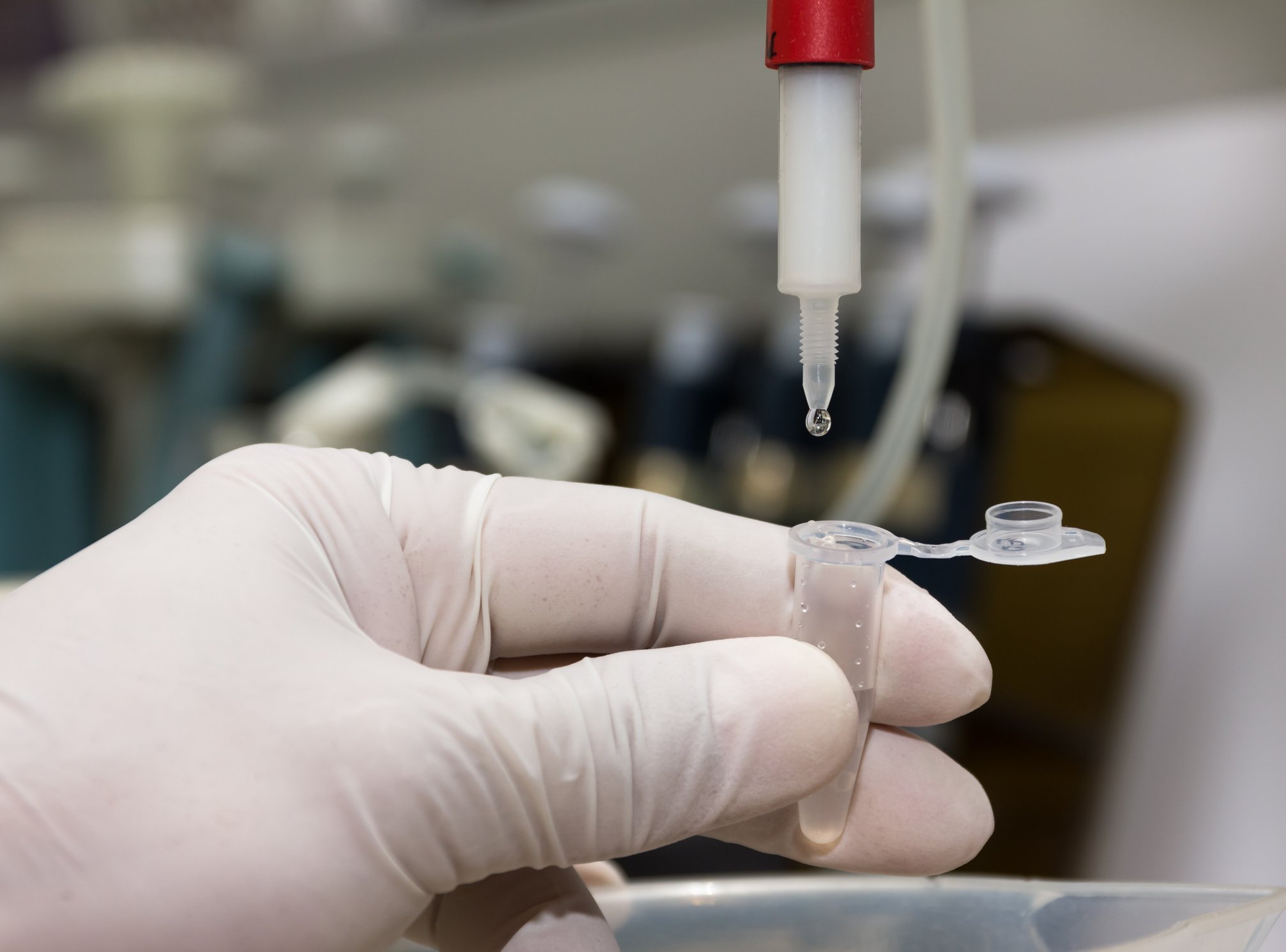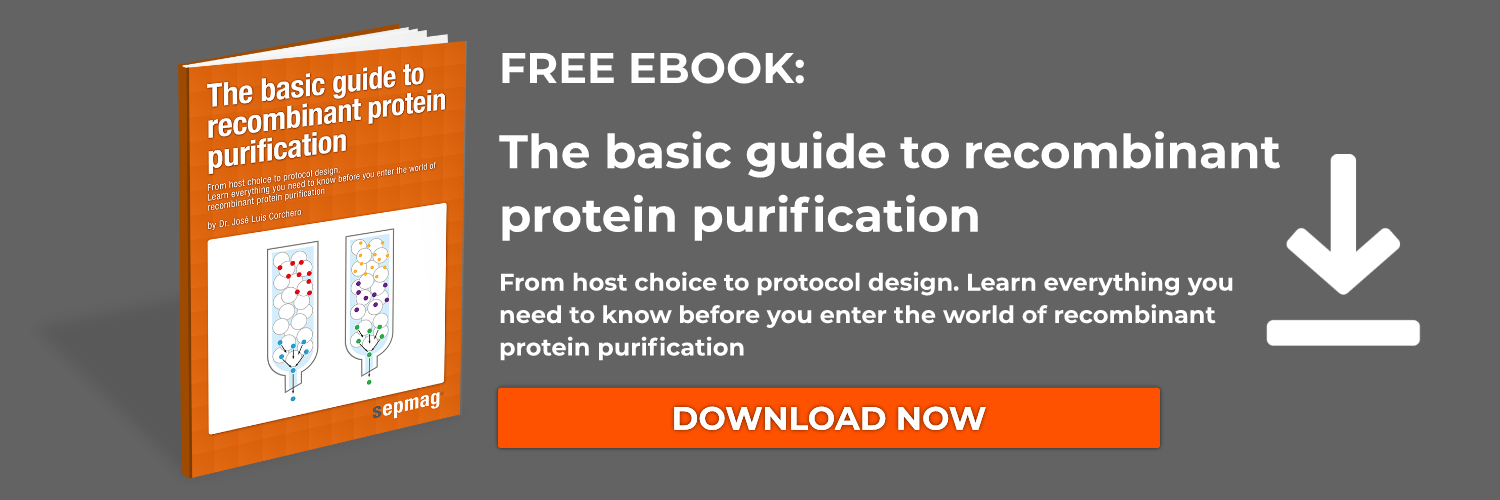A protein isolation protocol aims to safely and efficiently separate a specific protein from a complex biological sample. Isolation of proteins can be performed on mammalian, insect, plant, yeast, or bacteria samples. The first step of a protein isolation protocol requires lysing cells within a sample to reveal their contents which can include DNA, RNA, organelles, and various proteins. There are several methods of cell lysing which range from chemical to physical perturbation of a cell membrane or wall. You can read more about cell lysis in this article: How to lyse cells. After cells are lysed, protein purification can be performed. Two popular methods include affinity chromatography and magnetic bead separation
Protein Isolation Protocols Using Affinity Chromatography
Affinity chromatography relies on the use of an affinity column to reversibly capture target proteins within the sample. There are many types of columns that are pre-packed with standard purification molecules. These purification molecules line the interior of columns and contain molecules that have an extremely high affinity to the target proteins. For example, nickel affinity columns are lined with Ni-NTA (nickel-nitrilotriacetic acid) which have a high capacity for binding histidine. Proteins that are purified using this method are expressed with a “his-tag”, a multi-histidine chain that binds specifically with Ni-NTA. Alternatively, other proteins within the sample will bind non-specifically or not at all.
The next step in the protein isolation protocol involves the use of a binding buffer. Ideal binding buffers are gentle enough to keep your protein of interest bound to the column and unperturbed by external forces, yet strong enough to discourage non-specific binding of other proteins. After an incubation period, your target protein will be tightly bound to the affinity column. Next, a washing buffer is added to the column to effectively wash away anything that is not your protein of interest. Once all non-target components are removed from the column, an ellution buffer is used to separate the target protein from the column. This elution buffer generally has a higher concentration, increased salt content, and/or a more extreme pH as it is meant to disrupt the interaction between the protein and column.
General affinity chromatography protocol:
- Lyse cells
- Prepare affinity column (this can include packing the column with resin, or charging the column)
- Flow samples through affinity column with binding buffer
- Flow washing buffer affinity column to remove non-specific binding
- Flow elution buffer through affinity column to release protein-column binding and elute protein of interest
Magnetic Beads for protein isolation
Magnetic beads, also known as magnetic particles, are now a common alternative to traditional protein isolation protocols. Magnetic protein isolation does not require columns or resin for protein purification and can be easily performed in microcentrifuge tubes at the benchtop. Magnetic beads can be ordered precoated, for example with Ni-NTA, which can specifically bind your target proteins. Magnetic protein isolation protocols are simple, provide limited hands on steps, and are increasingly inexpensive.
General magnetic bead protein isolation protocol:
- Mix pre-bound magnetic beads with the cell lysate in a reaction tube. Allow the beads and sample to interact and occasionally pipette the sample to mix.
- Place the reaction tube on a magnetic separator rack. The magnetic bead bound proteins will be drawn towards the magnet, while everything else remains free in solution.
- Remove the solution from the tube, and resuspend the sample with a wash buffer.
- Discard the wash buffer to remove all non-bound components of the sample. Washing steps can be repeated as necessary.
- After washing, a final storage or experiment buffer may be added to the reaction.
- Remove the reaction tube from the magnetic separator rack so that magnetic bead bound proteins become resuspended.
- Add an elution buffer to separate the protein of interest from the magnetic beads.
Magnetic protein isolation protocols offer many benefits, including simple steps and the possibility of easily scaling up the process using constant magnetic force separators. These modern magnetic separators allow you to safely and efficiently separate and isolate your molecules at different volumes; from a few mL at the R&D scale to tens of liters in full scale purification processes. Lastly, modern magnetic separators also have the ability to monitor the separation process in real-time, which allows you to ensure the batch-to-batch consistency of your purification process. This ability can greatly improve your protein isolation protocol and provide control over improving and optimizing key steps in the magnetic protein isolation procedure.
Related articles:
Published on March 04, 2021 and updated on February 15, 2024.





